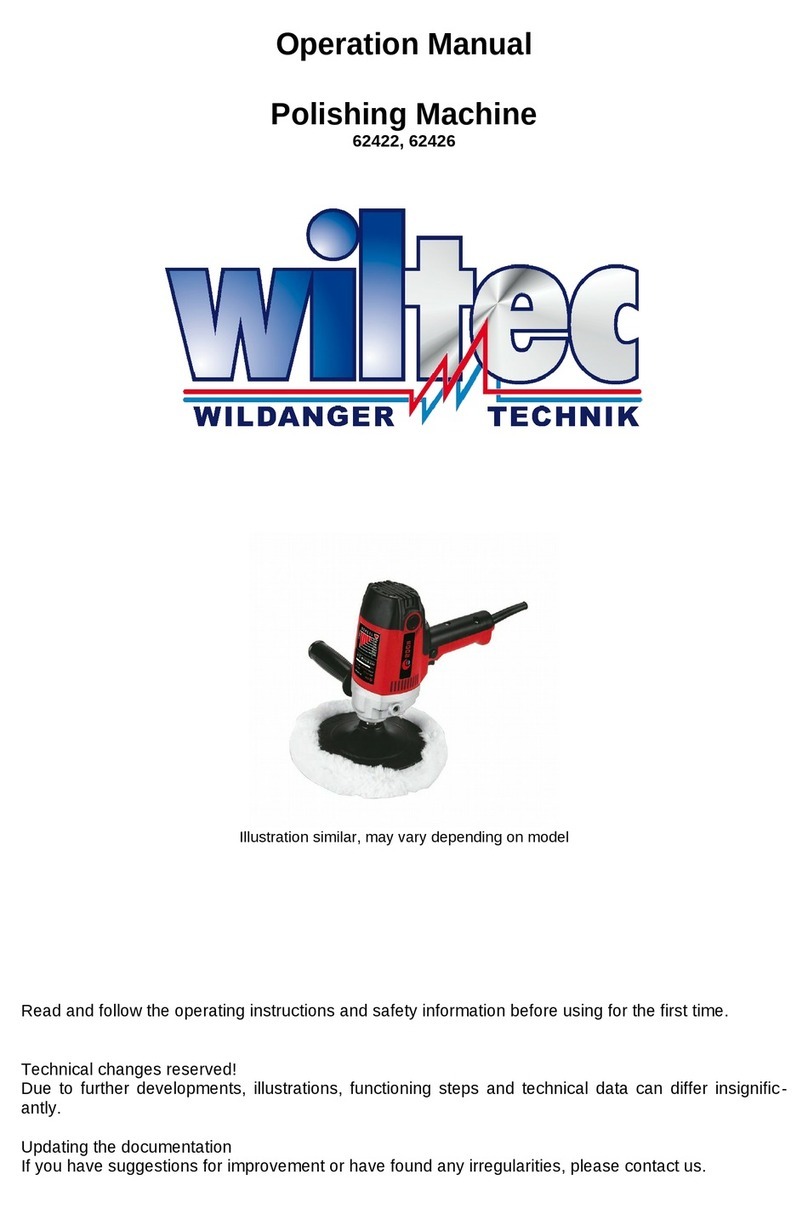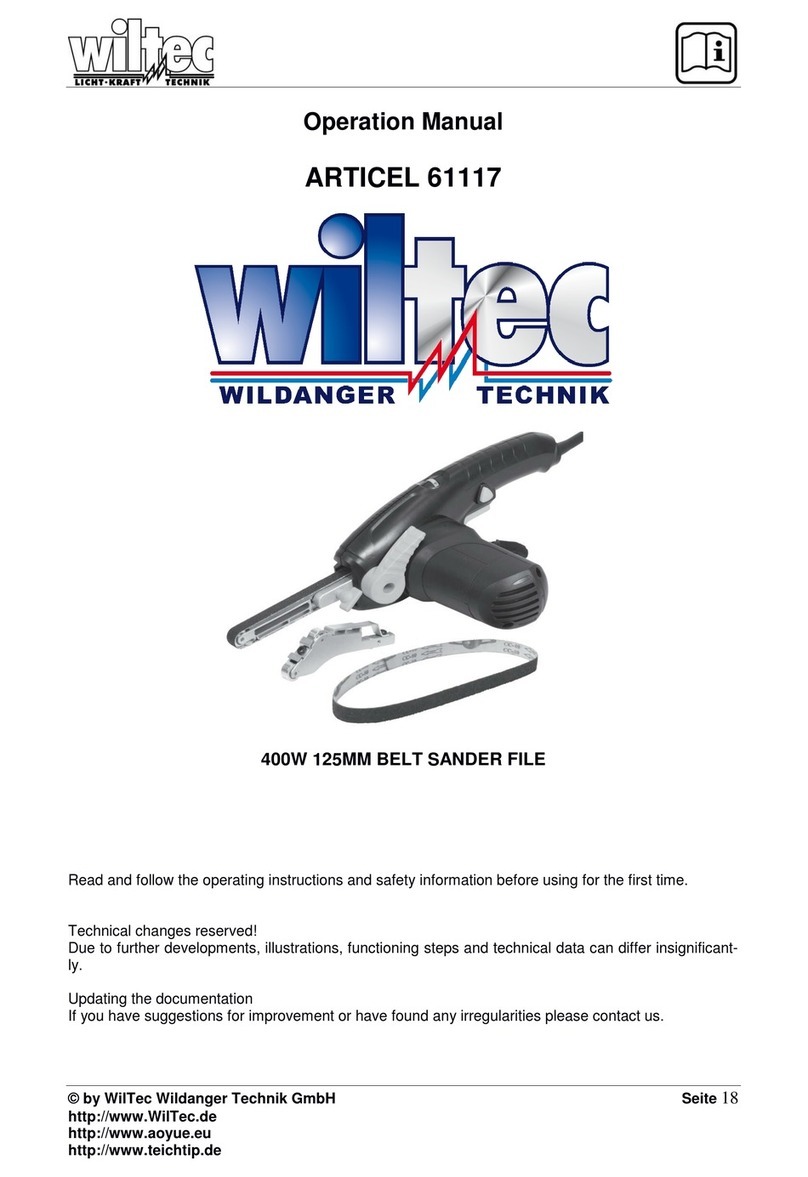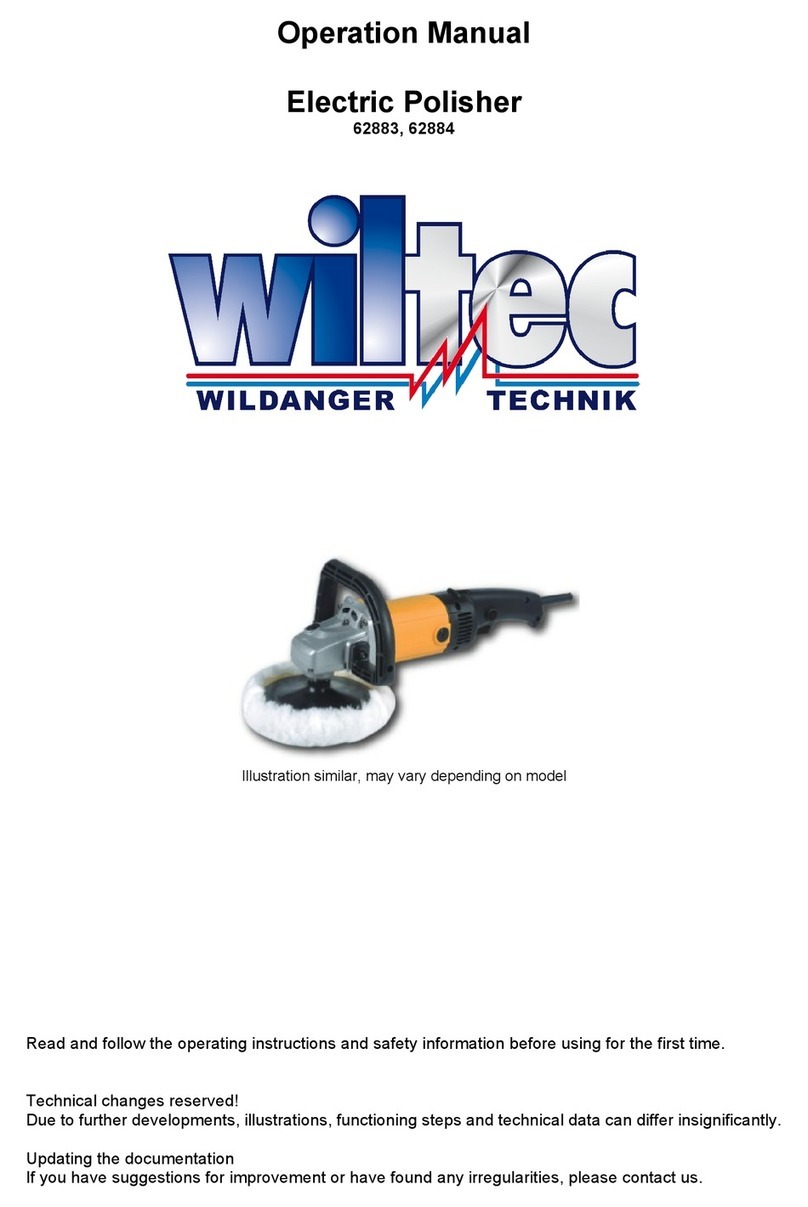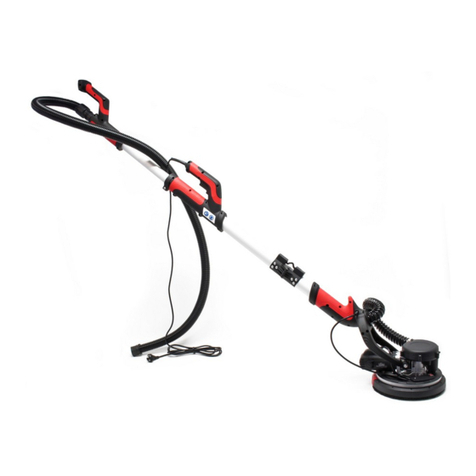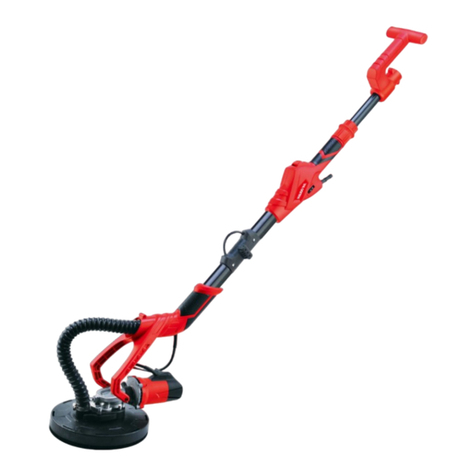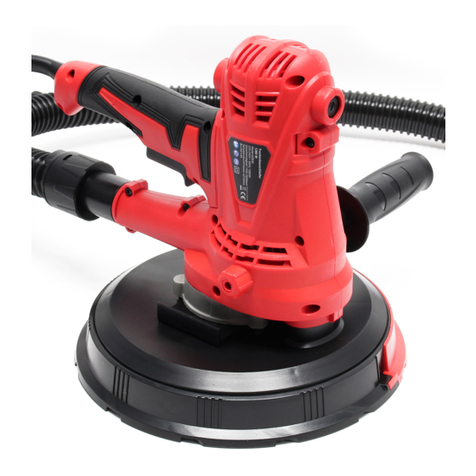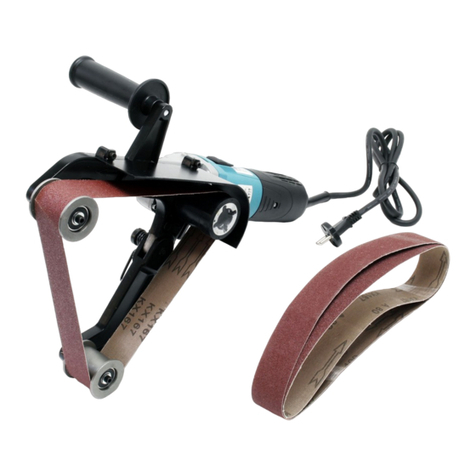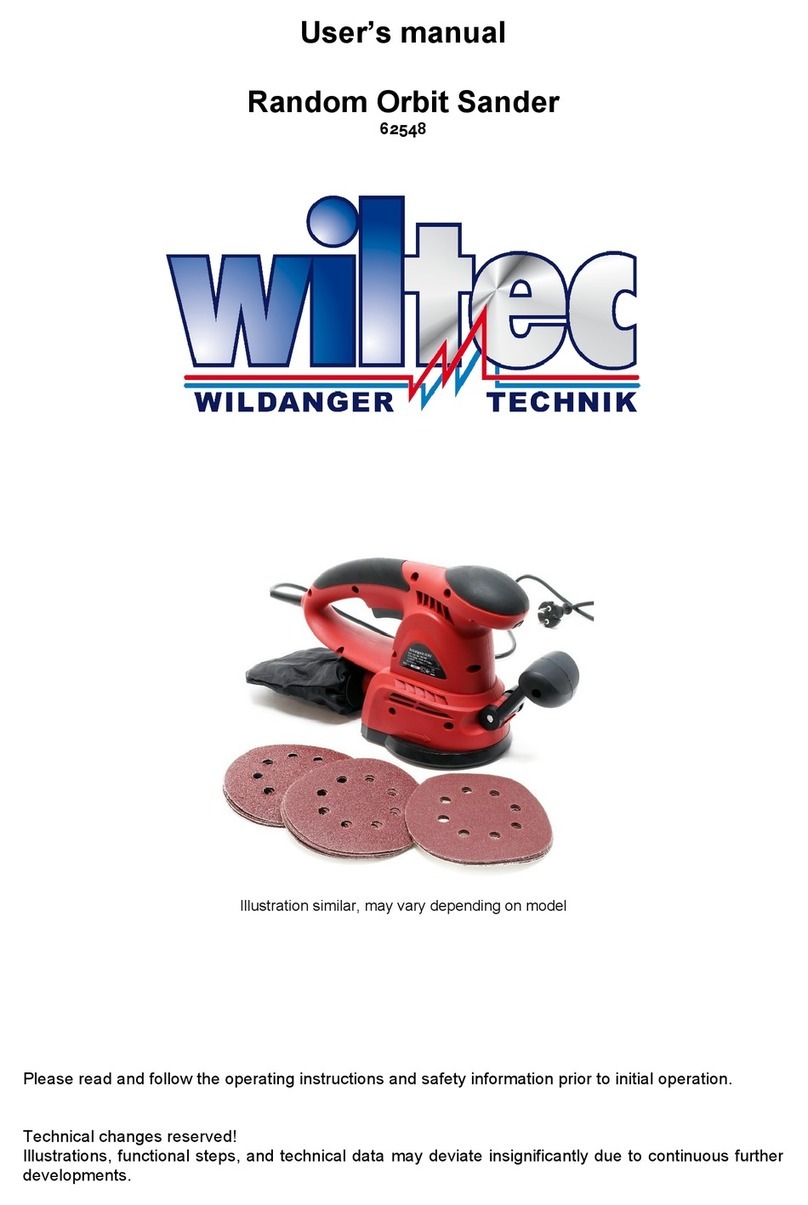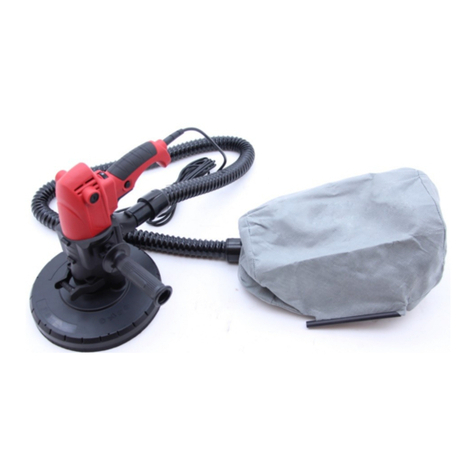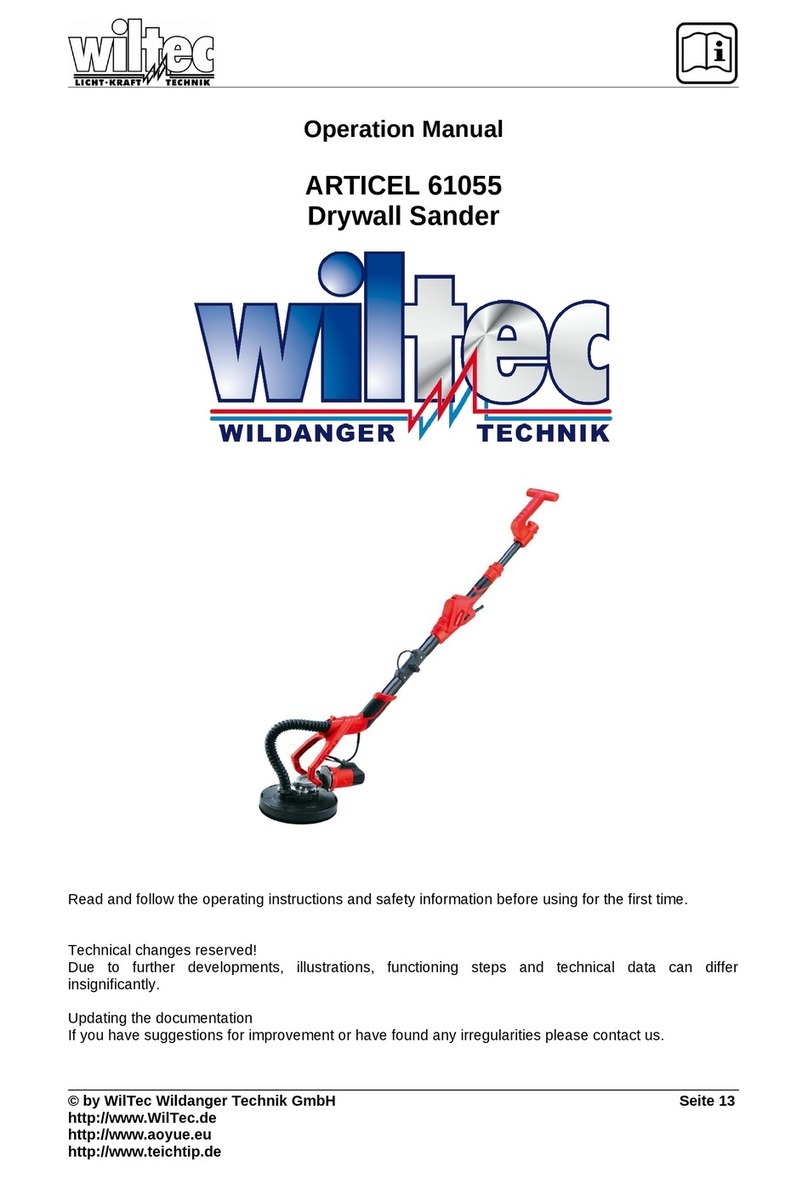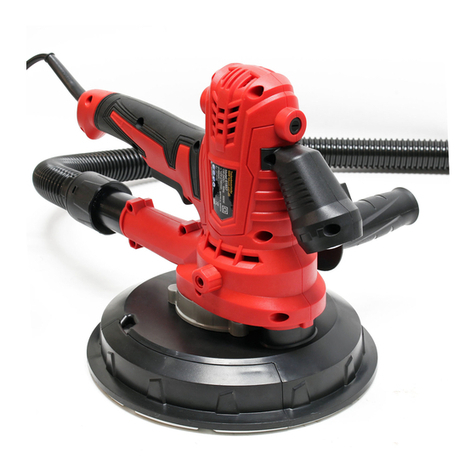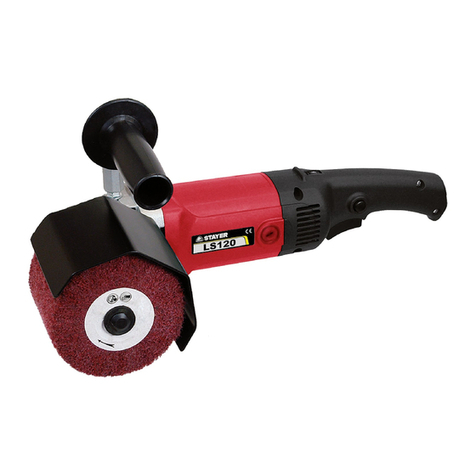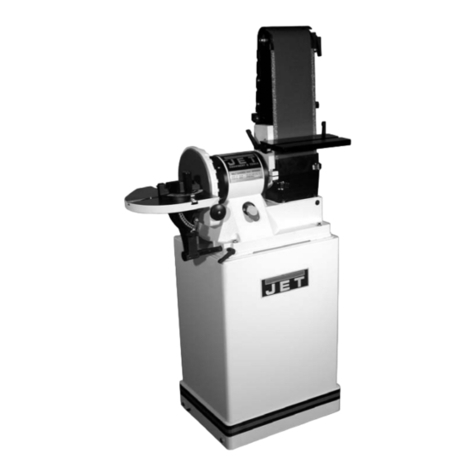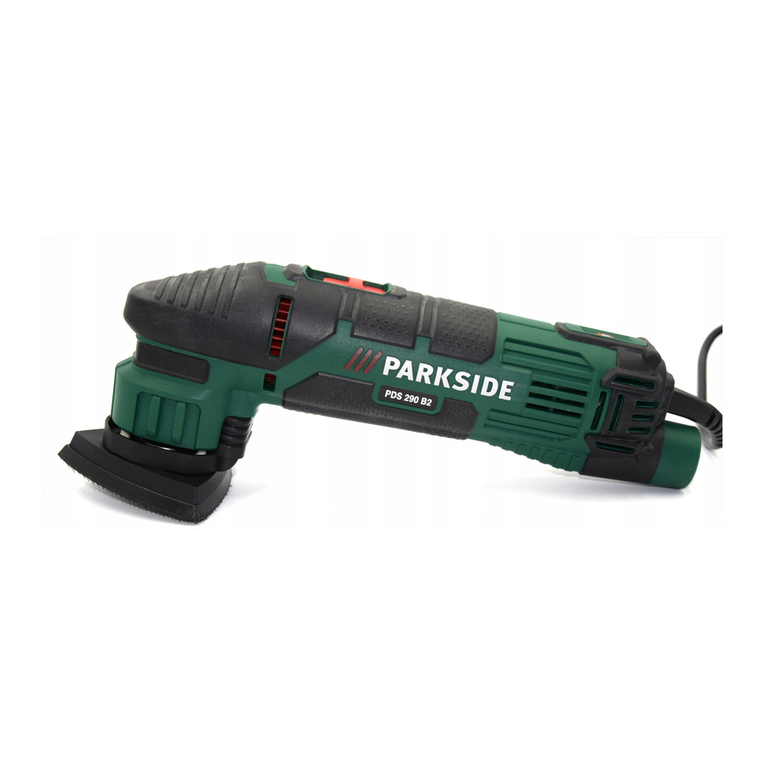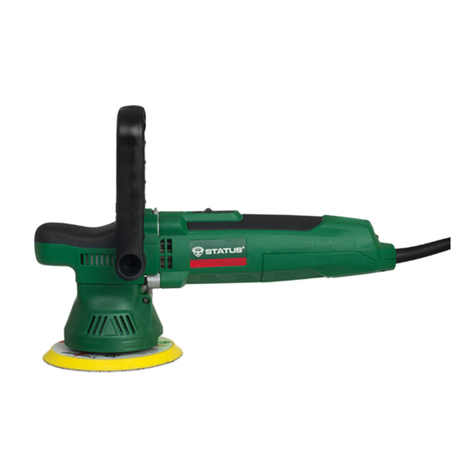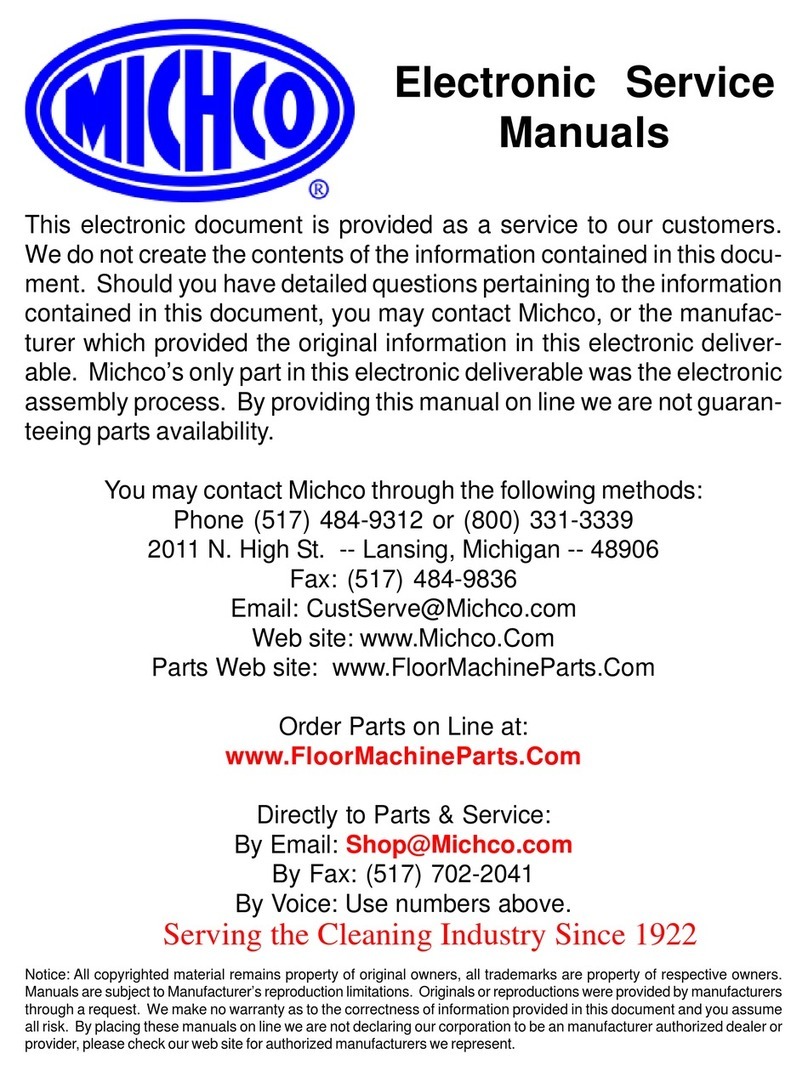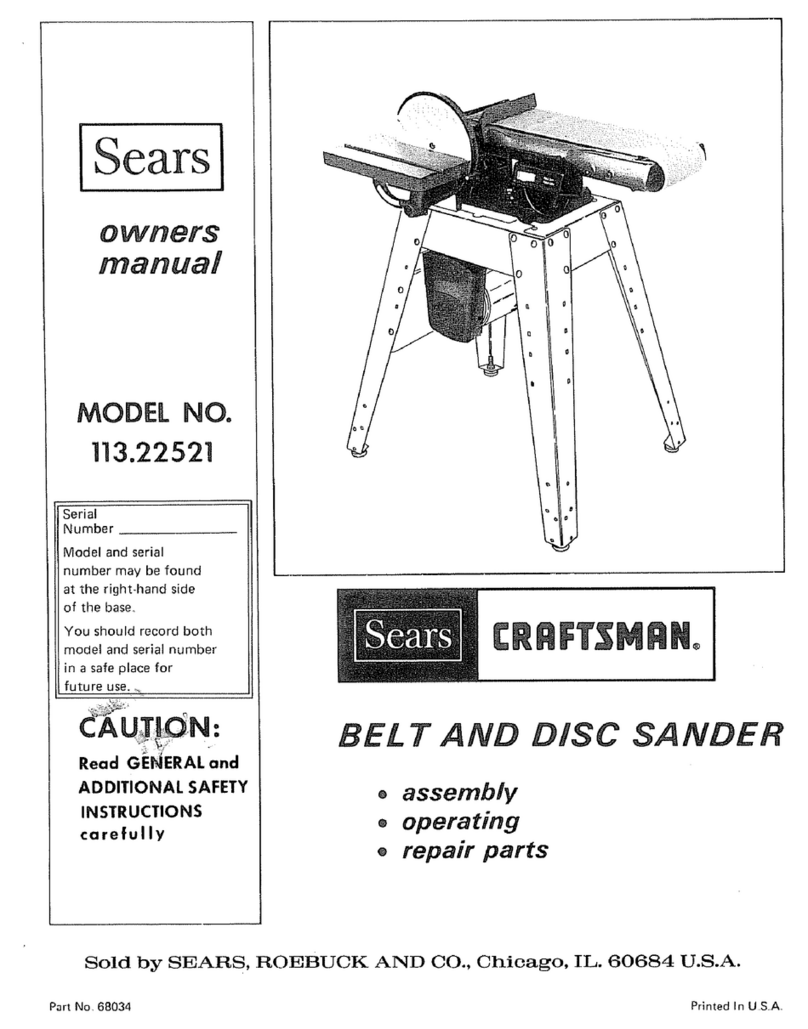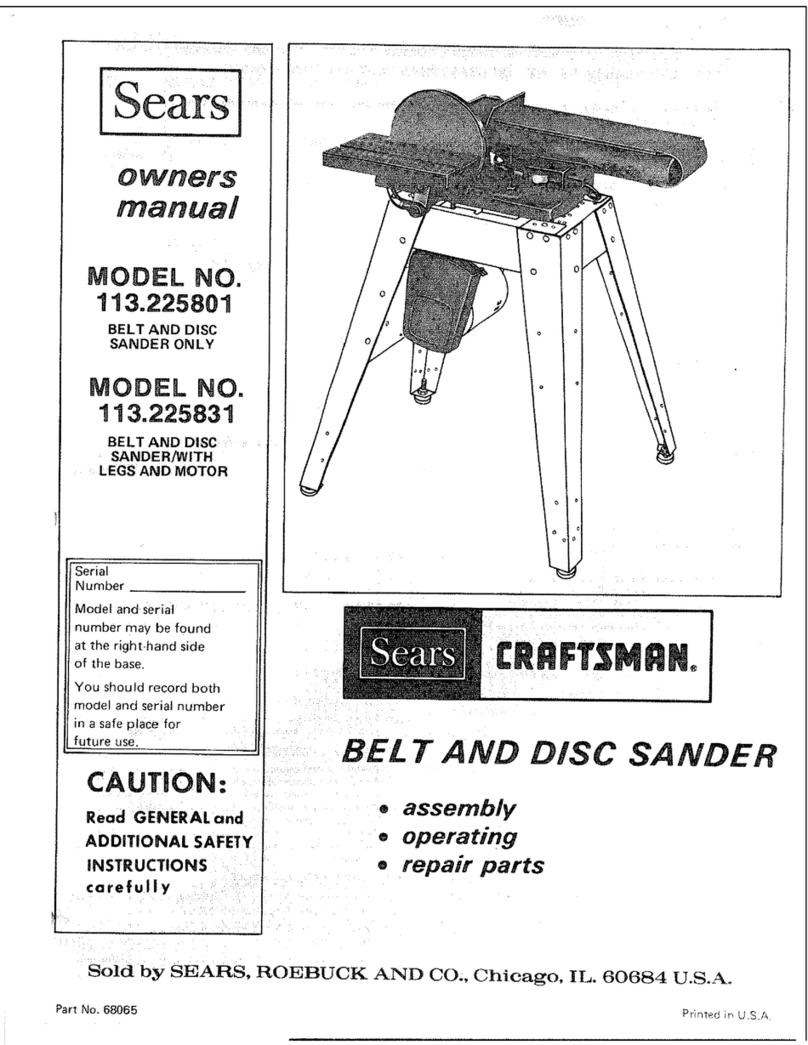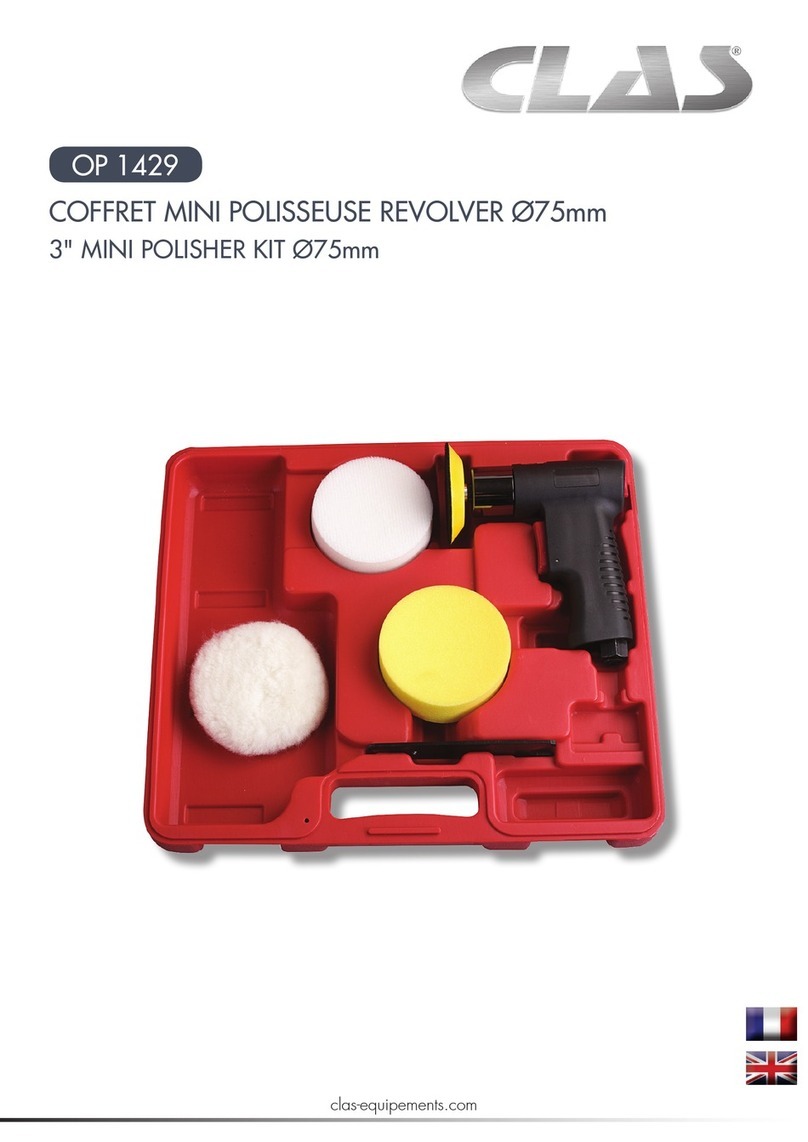OPERATING INSTRUCTIONS
Dear Customer, Thank you for the trust you have placed in us by buying our power tool. Each power
tool is carefully tested and subject to strict quality controls by quality assurance.
evertheless, the service life of a power tool depends to a great extent on you. Please observe the in -
formation contained in these instructions and the enclosed documentation. The more carefully you
treat your power tool, the longer it will provide dependable service.
SPECIFIED USE
The wraparound tube sander is for glazing, tarnishing, texturing, polishing and smoothing pipes with-
out the use of water.
The user bears sole responsibility for any damage caused by improper use. Generally accepted acci-
dent prevention regulations and the enclosed safety information must be observed.
SPECIAL SAFETY INSTRUCTIONS
Hold power tool by insulated gripping surfaces, because the belt may contact its own cord.
Cutting a “live” wire may make exposed metal parts of the tool “live” and could give the operator an
electric shock.
Flying sparks are created when sanding metal. Ensure that no persons are in danger. Due to the risk
of fire, all combustible materials must be removed from the work area (area affected by flying sparks).
During machining, of metals in particular, conductive dust can form deposits inside the machine. This
can lead to the transfer of electrical energy onto the machine housing. This can mean a temporary
danger of electric shocks. This is why it is necessary when the machine is running to blow compressed
air through the rear ventilation slots of the machine regularly, frequently and thoroughly. Here, the ma-
chine must be held firmly.
We recommend using a stationary extractor system and connecting a residual current circuitbreaker
(FI) upstream. When the machine is shut down via the FI circuit-breaker, it must be checked and
cleaned. See chapter 8 Cleaning for more information on cleaning the motor.
Dust from material such as paint containing lead, some wood species, minerals and metal may be
harmful. Contact with or inhalation of the dust may cause allergic reactions and/or respiratory diseases
to the operator or bystanders. Certain kinds of dust are classified as carcinogenic such as oak and
beech dust especially in conjunction with additives for wood conditioning (chromate, wood preserva-
tive). Material containing asbestos must only be treated by specialists.
otes:
Where the use of a dust extraction device is possible it shall be used.
The work place must be well ventilated.
The use of a dust mask of filter class P2 is recommended.
Follow national requirements for the materials you want to work with. Materials that generate dusts or
vapours that may be harmful to health must not be processed. Wear ear protectors. Exposure to noise
can cause hearing loss. Wear protective gloves. Always wear protective goggles!
Secure the workpiece against slipping, e.g. with the help of clamping devices. Always guide the ma-
chine with both hands on the handles provided. Loss of control can cause personal injury. ever place
your hand near rotating parts of the device or near the rotating sanding belt. Remove sanding dust and
similar material only when the machine is not in operation. Pull the plug out of the plug socket before
any adjustments, conversions or servicing are performed. The rated speed of the sanding belt must be
at least equal to the belt speed in idling marked on the power tool. A sanding belt running faster than
its rated speed can break and fly apart.
Check prior to each use that the sanding belt is correctly attached and is completely on the rollers.
Carry out a trial run: Allow the machine to run at idling speed for 30 seconds in a safe location. Stop
immediately if significant vibrations occur or if other defects are noted. If such a situation occurs, check
the machine to determine the cause.
© by WilTec Wildanger Tec nik GmbH Seite 3
ttp://www.WilTec.de
ttp://www.aoyue.eu
ttp://www.teic tip.de
